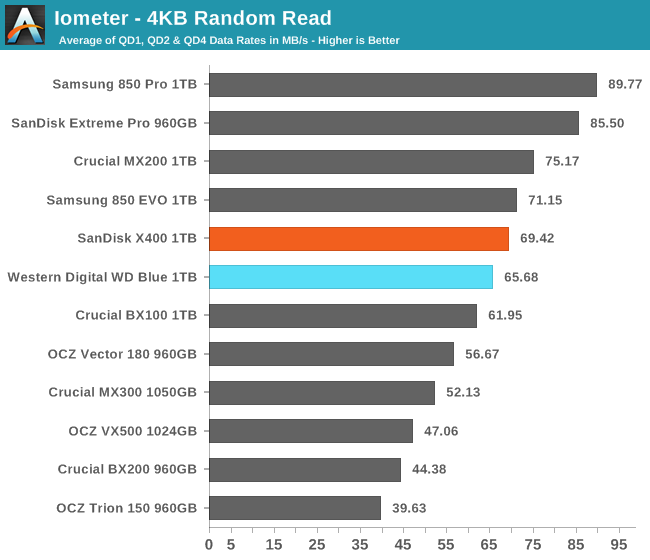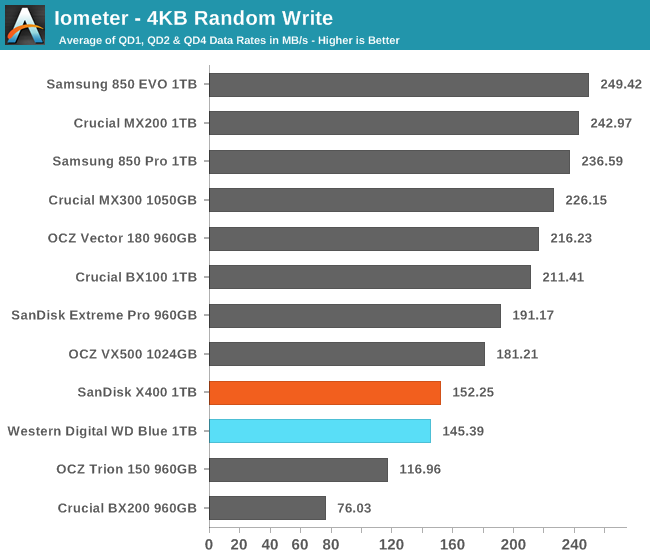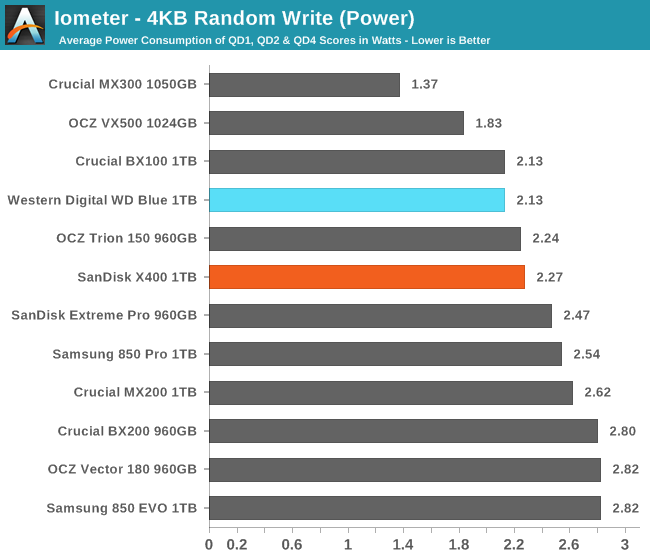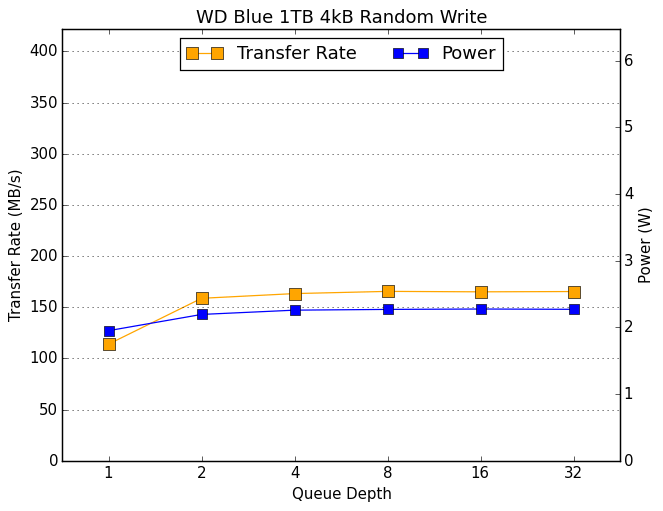The Western Digital Blue (1TB) SSD Review: WD Returns to SSDs
by Billy Tallis on October 11, 2016 8:00 AM EST- Posted in
- SSDs
- Storage
- Western Digital
- SanDisk
Random Read Performance
The random read test requests 4kB blocks and tests queue depths ranging from 1 to 32. The queue depth is doubled every three minutes, for a total test duration of 18 minutes. The test spans the entire drive, which is filled before the test starts. The primary score we report is an average of performances at queue depths 1, 2 and 4, as client usage typically consists mostly of low queue depth operations.

The WD Blue's random read speed is a bit slower than the X400 but the difference is not big enough to change the rankings and it is still above average.

The WD Blue draws slightly less power than the SanDisk X400, which is enough for it to retain efficiency that is good by the standards of planar TLC SSDs.
 |
|||||||||
The WD Blue's random read performance scales well with increasing queue depth, eventually reaching a maximum that is almost as high as the top SATA drives. The performance at QD16 is also notably better than most budget SSDs.
Random Write Performance
The random write test writes 4kB blocks and tests queue depths ranging from 1 to 32. The queue depth is doubled every three minutes, for a total test duration of 18 minutes. The test is limited to a 16GB portion of the drive, and the drive is empty save for the 16GB test file. The primary score we report is an average of performances at queue depths 1, 2 and 4, as client usage typically consists mostly of low queue depth operations.

The SanDisk X400 went a long way toward closing the gap in random write performance between TLC and MLC drives, but a substantial gap still remained. The WD Blue comes in just shy of the X400 but is much faster than the OCZ Trion 150.

The WD Blue doesn't set any overall record for power efficiency, but it does slightly improve on the X400's efficiency and raises the bar for planar TLC.
 |
|||||||||
The WD Blue shows minimal random write performance scaling with queue depth, increasing from QD1 to QD2 but remaining constant thereafter.










75 Comments
View All Comments
SeanJ76 - Thursday, October 20, 2016 - link
You couldn't pay me to use a Samsung SSD, not after their S7 ordeal and their screw up on SSD firmware update earlier this year....Bullwinkle J Moose - Friday, October 21, 2016 - link
Never heard of the firmware screwup earlier this yearPlease provide a link
and how exactly did the S7 ordeal affect the quality of their new SSD's
I'd love to hear more!
LMF5000 - Tuesday, March 28, 2017 - link
What I'm seeing in this article is that the Samsung drives vastly outperform everything else (by a factor of 1.5x to 2x in almost all the tests) except for power draw, and yet the price difference is almost negligible (right now my favourite shop is selling the WD blue 250GB for €95.99 and the Samsung 850 Evo for €109.99). Why would anyone buy the WD over the Samsung?